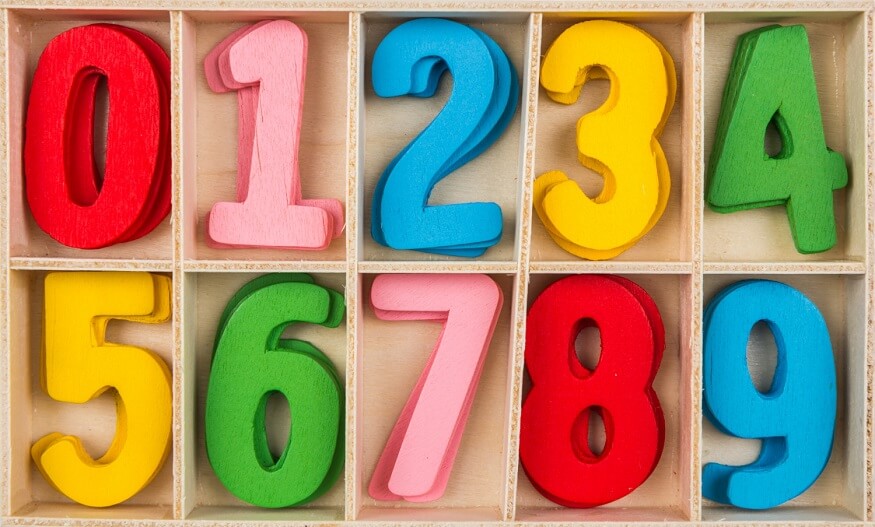What are consecutive numbers?
Consecutive numbers are numbers that follow each other in order, with a difference of one between each pair. Consecutive numbers examples are 1, 2, 3, 4, and 5, as are 10, 11, 12, and 13. Consecutive numbers can also be negative. Negative consecutive numbers examples are -3, -2, -1, and 0.
Benefits of teaching consecutive numbers for kids
Teaching consecutive numbers for kids has several benefits, including:
- Developing number sense: Learning about consecutive numbers helps kids understand the concept of numbers increasing or decreasing by one, which helps them develop their number sense.
- Counting skills: Understanding consecutive numbers helps kids improve their counting skills as they learn to count in order without skipping any numbers.
- Basic arithmetic: Consecutive numbers are important in basic arithmetic operations like addition and subtraction, where kids need to understand the concept of adding or subtracting one to a number to get the next or previous number.
- Problem-solving: Many math problems involve sequences of consecutive numbers, and understanding this concept helps kids solve such problems effectively.
- Preparation for advanced math: Consecutive numbers are also an essential concept in advanced mathematics like algebra and calculus, so a strong foundation in this area will help kids in their future studies.
Are consecutive and continuous numbers the same?
Consecutive numbers are numbers that follow each other in order with a difference of one between each pair, while continuous numbers are numbers that have no gaps or interruptions between them.
Consecutive numbers are 1, 2, 3, 4, and 5 because there is a difference of one between each pair of numbers, while 1.5, 2, 2.5, 3, and 3.5 are continuous numbers because there are no gaps or interruptions between them.
In other words, consecutive numbers are always integer values, while continuous numbers can be any real number and may include decimal places or fractions.
It is also worth noting that while all consecutive numbers are continuous, not all continuous numbers are consecutive. For instance, 1, 1.1, 1.2, 1.3, and so on are continuous numbers, but they are not consecutive numbers.
Also Read | List of Best CSBE and ICSE Schools in India
Importance of teaching odd and even consecutive numbers.
Teaching odd and even consecutive numbers to kids is an important part of developing their number sense and preparing them for more advanced math concepts. With patience, practice, and creative teaching methods, kids can master this concept and build a strong foundation in mathematics.
Also Read | Learning consecutive numbers through play.
- Start with the basics: Begin by teaching kids the difference between odd and even numbers. Explain that odd numbers end with 1, 3, 5, 7, or 9, while even numbers end with 0, 2, 4, 6, or 8.
- Use visual aids: Use visual aids like number charts or blocks to help kids understand the concept of odd and even numbers. For example, group the numbers by colour or shape, with odd numbers in one group and even numbers in another.
- Practice counting: Encourage kids to practice counting by 2’s to help them recognize odd and even numbers. You can also have them count objects like blocks or beads and group them by odd or even.
- Play games: Games like “Odd or Even” or “Odd and Even Toss” can be a fun way for kids to practice identifying odd and even numbers.
- Reinforce the concept: As kids become more familiar with odd and even numbers, reinforce the concept by incorporating it into other math activities like addition, subtraction, and multiplication.
Teaching odd and even consecutive numbers to kids is an important part of developing their number sense and preparing them for more advanced math concepts. With patience, practice, and creative teaching methods, kids can master this concept and build a strong foundation in mathematics.
Learning consecutive numbers through play.
Teaching consecutive numbers through play can be a fun and effective way to help kids learn and retain the concept. Here are some examples of games and activities that are used to teach consecutive numbers through play:
- Number hopscotch: Draw a hopscotch grid on the ground and write consecutive numbers in each square. Have kids hop on the squares in order, saying the numbers aloud as they go.
- Number scavenger hunt: Hide numbers in the room or outdoor area and have kids find them in order. For example, hide the numbers 1-10 around the room and have kids find them and line them up in order.
- Number race: Have kids line up a set of consecutive numbers in order as quickly as possible. Keep a track of their time and see if they can beat their previous time.
- Number memory game: Write consecutive numbers on cards and turn them face down. Have kids take turns turning over two cards to try to find a matching pair of consecutive numbers.
- Number chart puzzle: Print out a number chart with missing consecutive numbers and have kids fill in the missing numbers. You can also create a larger puzzle by printing out each number on a separate piece of paper and having kids put them in order.
These games and activities can be adapted to fit different ages and skill levels and can be played individually or in groups. By incorporating play into the learning process, kids are more likely to stay engaged and have fun while developing their math skills.
Use of consecutive numbers in real life.
- Sports and competitions: In many sports and competitions, consecutive numbers are used to track progress or determine winners. For example, in a running race, the order in which runners cross the finish line is determined by consecutive numbers.
- Music and art: In music, consecutive numbers are used to represent notes on a scale, while in art, consecutive numbers may be used to number paintings or sculptures in a collection.
- Banking and finance: Consecutive numbers are often used to number bank checks, invoices, and receipts to track transactions.
- Transportation: Consecutive numbers may be used to number train cars or airline seats to track inventory and assign seats to passengers.
- Computer programming: Consecutive numbers are often used in computer programming to represent array indices or to create loops that iterate over a series of values.
- Science and research: In scientific experiments and research studies, consecutive numbers may be used to number participants or to represent different conditions or treatments
Conclusion
Consecutive numbers play a vital role in many aspects of daily life, and having a solid understanding of this concept is important for success in many fields and industries.
Overall, in Euroschool we believe, teaching consecutive numbers to kids is a crucial part of building a solid foundation in mathematics and helps them develop essential math skills that they will use throughout their lives.










